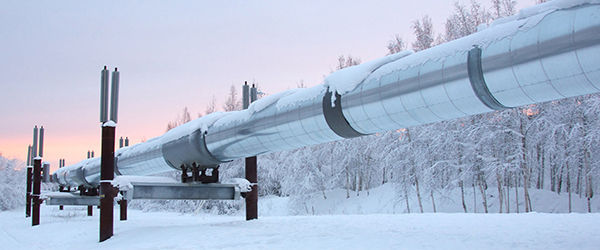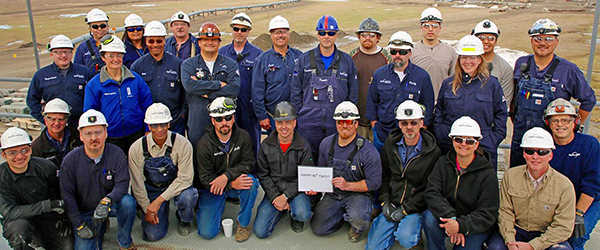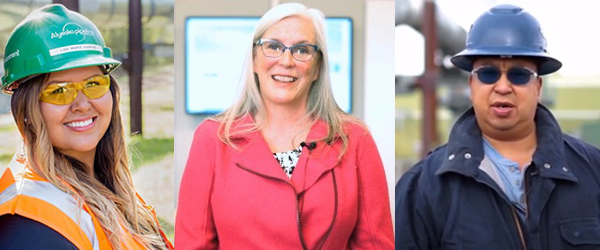TAPS Operations: Flow Assurance
A continuum of challenges
TAPS has transformed Alaska’s economy and strengthened the nation’s energy infrastructure. In 2020, TAPS transported 3.86 percent of the nation’s domestic crude production and remains the backbone of Alaska’s economy. Since coming online, TAPS has delivered more than $145 billion in North Slope Petroleum revenue for Alaska, equating to more than 80 percent of the state’s unrestricted general fund revenue over that time.
More than 2 million barrels per day (bpd) once surged through TAPS. Since peak flow in the late 1980s, TAPS throughput has dropped at an average of around 5 percent per year to a low of 480,199 bpd in 2020. Historic TAPS throughput data
Less oil means slower-moving oil. Slower-moving oil means colder oil. And the slower and colder the oil, the more complicated the challenges for Alyeska Pipeline Service Company, the pipeline’s operator.
Water / Ice
Crude oil naturally contains small amounts of water. As crude slows and cools, water begins to separate out from the oil and accumulate at the bottom of the pipeline, increasing the risk of corrosion. This happens today during shutdowns, when water accumulates at low points. As water drops out and everything cools, the risk of ice-related problems increases.
Wax
Alaska North Slope Crude oil naturally contains up to 2 percent wax by volume. There are two issues with wax: First, when the pipe walls are colder than 70 degrees and colder than the oil, wax crystals deposit on the pipe wall and stick to it. Second, wax precipitates out of the crude oil. Less turbulence, cooler crude temperature and slower flow all may result in more wax sticking to pipe walls and more wax dropping out of the oil and settling in the pipeline. Wax deposits are removed by running cleaning pigs.
The pipeline today
Alyeska and its owner companies have analyzed the risks, options and challenges of declining throughput. The best long-term solution is more oil. In the meantime, some mitigations are already in place, while engineers are validating other potential steps through laboratory and field tests.
Transitional fix: More heat, fewer pigs
For the immediate future, Alyeska is adding heat to keep the crude warm and to prevent small amounts of water from freezing in the line. The pigging program has been modified, as well, with pigs being sent at less frequency, a ‘pig washing’ station being installed at Pump Station 8, and the use of different pig designs to keep the pipe clearer of wax.
The following resources capture current and historical work aimed at understanding and responding to challenging conditions posed by declining throughput on TAPS. This data will be updated regularly.



